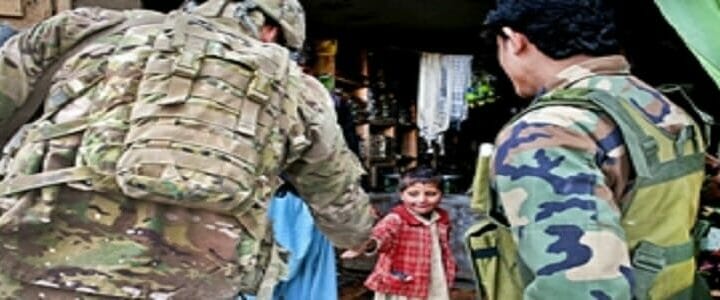Last month, we learned that the Taliban and the U.S. government held preliminary peace talks in Qatar. Afghanistan’s president, Ashraf Ghani, is said to have been considering a cease-fire for later this month to coincide with the Muslim holy day of Eid Al-Adha.
This weekend, we learned that the Taliban are clearly keeping all of their options open. A full assault on the key city of Ghazni is a clear indication that the men in the black turbans are not prepared to stop fighting just yet.
Assault on a key intersection and historic site
Ghazni is an important Afghan cultural center. Its citadel, set high atop a bluff, and its tall minarets are both over a thousand years old. They are truly a sight to behold. It is also at a critical point on Afghanistan’s Highway 1, the “Ring Road,” that connects the major population centers of Kabul, Kandahar, and Heart. The road to Sharan, the provincial capital of Paktika, branches off the Ring Road at Ghazni, and the road to Gardez, the capital of Paktia province, intersects the Ring Road not far north of there.
According to multiple reports, the assault began on Friday, as fighters who have held on to territory in the more remote areas of Ghazni province moved into the provincial capital, seizing and controlling street intersections and tying to take checkpoints along Highway 1. Local militia loyal to the government told the New York Times that despite Taliban attacks, they remained in control of the highway.
It appears to be a different story inside the city itself. The government in Kabul continued to insist that the security situation in the city was under control. Najib Danish, spokesman for the Afghan Interior Ministry, told reporters during a press conference that “the situation is under our control in Ghazni, and the problems are not that serious.”
Afghan Officials Are Downplaying Problems in Ghazni
Eyewitnesses, including international reporters, told a different story.
The Taliban have destroyed cellphone towers and driven the local television stations off the air. That makes it hard to get the news out. (Bear in mind, the fact that cell towers and TV stations even exist is a testament to how far the country has come since I was last there in 2005).
But the Times, along with the BBC and Associated Press, have reported that they have seen black-turbaned men patrolling the city streets without fear of challenge. American helicopters, and at least one unmanned aerial vehicle, were providing close air support overnight, although there is no word on how effective that support has been.
While there will be plenty of time for review, the hot take is that the Afghan National Army and provincial security forces are still not ready to fend for themselves.
Taliban return to their roots
Seizing a key intersection like Ghazni is a bit of a return to the beginning for the Taliban. The group formed in part because of the powerful “transport mafia” who controlled the shipment of goods between Quetta in Pakistan to Kandahar. Local warlords set checkpoints along the road at any number of points to extort “tolls’ from the drivers. Those same checkpoints controlled the movement of young students between their homes and their madrassas, the religious schools that gave the Taliban its name. (Taliban is the plural form of “talib,” which means “student”).
One of the first major military moves by the Taliban came in October of 1994, when 200 men took control of the border crossing at Spin Boldak on the Quetta-Kandahar road. They used arms taken there to capture Kandahar, and financed their operations largely with “tolls” collected from the drivers shuttling merchandise across the border.
Ghazni isn’t in any long-term danger. U.S. forces won’t let the Taliban control the center of the city for long if the Afghan forces prove unable or unwilling to clear the town. But that cannot continue indefinitely. One of the main goals of the U.S. presence is to build the Afghan National Army’s capacity to carry on the fight itself.
It will have to, if it’s ultimately going to defeat a force that’s been doing what it does for nearly 30 years.


